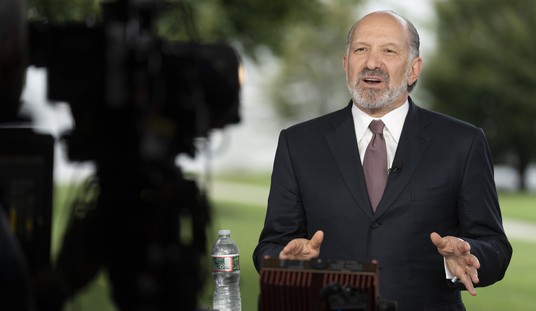Friendships Trump Arguments When it Comes to Conversion
That street preacher may not convert you — but your best friend will. Perhaps contrary to popular opinion, people rarely actually convert based on rhetoric or arguments. Social science hints that social networks, more than persuasive pastors or even good arguments, explain the phenomenon of choosing a faith.
Baylor University sociology professor and author of 20 books Rodney Stark argues that converts are most attracted not to religious ideas, but by social connections with believers in their new religion. After conversion, new believers say they were satisfied by true doctrine, but the actual process involves social deviance and social conformity. This applies to all religions, and helps explain the growth of Christianity in particular. When it comes to evangelism, making friends can be more important than making arguments.
In his new book A Star in the East: The Rise of Christianity in China, Stark presents surprising findings of a new study on the growth of Christianity in China — Chinese Christians are many times more likely to convert if their friends or family already believed in Jesus Christ. Preachers are much less effective at getting new people in the door.
Explaining Conversion Does Not Minimize the Power of Faith
Stark, a Christian who has written numerous books on the truths and power of Christianity, does not seek to minimize faith (Christian or otherwise) in this explanation of conversion — rather, he seeks to explain how the actual process works. His book The Rise of Christianity uses social science to better understand the reasons behind the explosive growth of faith in Jesus Christ throughout the Roman Empire.
For a long time, historians have struggled to understand how the small group of Christians after Jesus’ ascension — the book of Acts puts the numbers at 120 and 5,000 — eventually outnumbered all other faiths in the Roman Empire (estimated population 60 million).
Using estimates from historical sources, Stark found that a growth from 1,000 Christians in 40 A.D. to 33 million Christians in 350 A.D. required a growth rate of 40 percent per decade. While this growth seemed miraculous to Christians at the time and historians afterward, it can also be explained through the expansion of social networks.
Early Christians also did something Pagans often did not — they cared for the sick and dying. In the ancient world, when a Pagan realized deadly plague spread from person to person, he usually fled the big city. Even the famous physician Galen left the city of Rome when the plague struck. Many people would die, not from the plague, but because they could not care for themselves — they died of thirst or hunger.
Christians, by ministering to the sick, often got sick themselves, but kept people from dying of these secondary causes. Stark studies two plagues that hit the Roman Empire in the 160s and 250s A.D., and concludes that when Christians cared for the sick, they had a better survival rate and formed relationships which helped the faith grow. As more Pagans died, the surviving non-Christians developed more Christian friendships.
No Really, Why Did You Become a “Moony?”
Zeroing in on a deviant religious group, the American branch of the Korean-based Unification Church — widely known as “Moonies” — Stark sought to scientifically record the process of religious conversion. When Stark and his research partner John Lofland found the Moonies, they had not yet converted a single stranger.
The movement’s American founder, Miss Kim, tried to spread the message of her faith — an unorthodox approach to Christianity widely deemed heretical — through press releases, radio spots, and renting halls for public meetings, but each of these efforts failed. Instead, the first few converts were old friends or relatives of members who visited the young church in San Francisco. As the movement grew, they began to convert people who previously had “no use for church at all,” and did not already have religious social ties.
“When asked why they converted, Moonies invariably noted the irresistible appeal of the Divine Principles (the group’s scripture), suggesting that only the blind could reject such obvious and powerful truths,” Stark recalled.
“But Lofland and I knew better because we had met them well before they had learned to appreciate the doctrines, before they had learned how to testify to their faith, back when they were not seeking faith at all.” He particularly remembered one future convert who once told Stark “he was puzzled that such nice people could get so worked up about ‘some guy in Korea’ who claimed to be the Lord of the Second Advent. Then, one day, he got worked up about this guy too.”
Stark and Lofland realized that “the only ones who joined were those whose interpersonal attachments to members overbalanced their attachments to nonmembers.” In other words, once one man’s circle of friends and family became more Moony than non-Moony, he also opted for the new faith.
“Becoming a Moonie today is an act of deviance, as was becoming a Christian in the first century. Such conversions violate norms defining legitimate religious affiliations and identities,” Stark explained. From this, he developed a theory: “Conversion to new, deviant religious groups occur when, other things being equal, people have or develop stronger attachments to members of the group than they have to nonmembers.”
Testing The Theory: Christianity in Rural China

This new book from Templeton Press tells the fascinating story of the explosion of Christianity in China. Credit: Templeton Press
To test this theory, Stark turned to an in-depth study of Christians in rural China. In 2012, a survey in rural villages in Funan County of Anhui Province asked self-identified Christians a series of questions about their first experience with Christianity, such as: What was the source of your first knowledge of the faith? What was the relationship between you and the first Christian you knew? How many of your relatives are Christian?
The results strikingly confirmed Stark’s theory. The numbers found below are taken from A Star in the East, pages 106 to 108.
When asked who first introduced them to Christianity, these rural Chinese believers pointed to their social networks first, and preachers a very distant second. 38.3 percent said they first heard about the faith from acquaintances, while 36.9 percent first heard about it from family members. 14.8 percent first learned about Jesus from their neighbors, and only 3.4 percent heard about Jesus for the first time from pastors. Not one said the media or the Bible was their first source, while 6.7 percent said it was unclear.
Most of these converts also had a close relationship with the first Christian they knew. 39.6 percent said their first Christian contact was a relative, 38.9 percent said it was an acquaintance from the same village, and 16.8 percent said an acquaintance from a nearby village. Only 3.4 percent said the first Christian they knew was a preacher.
Converts overwhelmingly had ties to family members who were Christian. While only 5.9 percent said “all” of their relatives believed in Jesus, 34.1 percent said “most” of their family did, while 19.3 percent said “half,” and 29.6 percent said “few.” Only 6.7 percent said they had no Christian family members. 55 percent of non-Christians in the survey said they had no Christian relatives.
Overall, 68.9 percent of Christians agreed that their “Christian belief is in accord with most of the local people.”
Now Go Preach the Word – In Your Living Room
A living faith requires more than conversion, but you can’t train someone to become a true disciple unless they have already become a Christian.
As these studies on religion in general teach, Christians cannot just sit back and let pastors and missionaries do all the work for them. Evangelism doesn’t start with you preaching on the rooftops — it starts with your acquaintances, friends, and family.
If you develop deep relationships with non-believers and invite them into your social network of believers, the results may just surprise you.










Join the conversation as a VIP Member